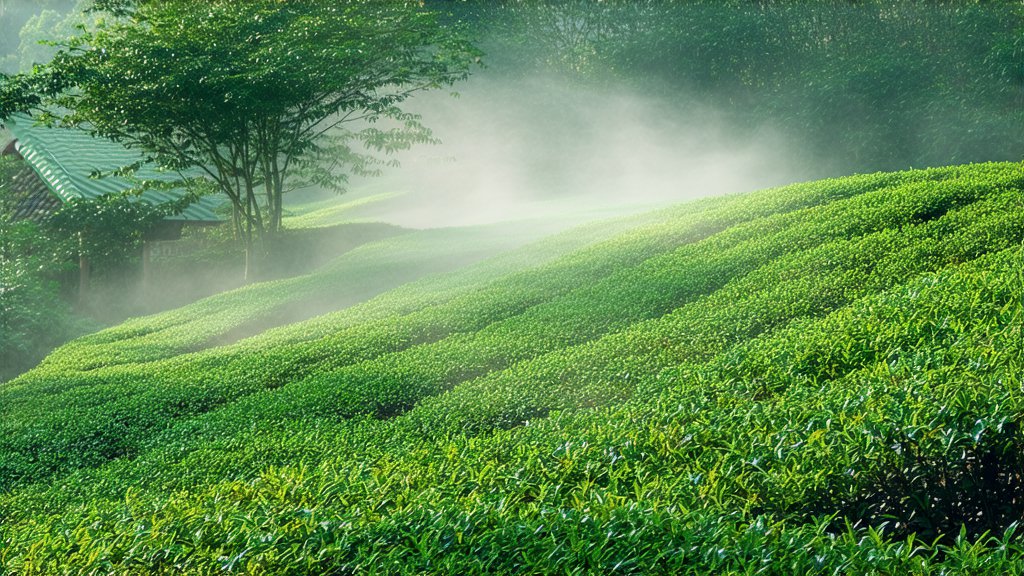
In the vast and diverse landscape of Chinese tea culture, where green, black, white, oolong, and pu-erh teas each hold their own unique place, there exists a lesser-known gem that exudes a golden elegance unparalleled by its more celebrated counterparts. This is Junshan Yinzhen, a premium variety of Huangcha (yellow tea), hailing from the mist-shrouded mountains of Junshan County in Hunan Province. Its name, translating to "Silver Needle of Junshan," not only reflects its appearance but also hints at the meticulous craftsmanship and rich history embedded within each precious leaf.
Historical Roots and Cultural Significance
The story of Junshan Yinzhen intertwines with the ancient tea traditions of China, stretching back over a millennium. It is said that during the Tang Dynasty (618-907 AD), this region was already renowned for producing exceptional teas, which were highly prized by emperors and scholars alike. However, it wasn't until the Ming Dynasty (1368-1644 AD) that the distinctive yellow tea processing techniques were developed, setting the stage for Junshan Yinzhen's prominence.
Junshan Yinzhen gained further recognition during the Qing Dynasty (1644-1912), when it became a staple in the imperial court, symbolizing purity, refinement, and the highest quality. Its production was strictly regulated, ensuring that only the finest leaves made their way into the royal tea ceremonies. Today, while the monarchy has long since faded, Junshan Yinzhen continues to be celebrated as a national treasure, embodying the essence of Chinese tea heritage.
Varieties and Characteristics
Junshan Yinzhen stands out among other Huangcha varieties due to its pristine growth environment and unique processing methods. The tea bushes are primarily cultivated on the misty slopes of Junshan Island, an isolated landmass amidst the Dongting Lake. This secluded location imparts a distinct character to the tea, influenced by the lake's microclimate and the fertile soil enriched by lake sediments.
The leaves of Junshan Yinzhen are carefully selected, typically consisting of only the youngest, most tender buds and leaves. These exhibit a striking silver hue, resembling fine needles dusted with frost, hence the name "Silver Needle." When brewed, the tea reveals a light golden liquor, exuding a subtle yet complex aroma that combines floral notes with hints of fruit and honey. Its flavor profile is delicate yet profound, offering a smooth, mellow taste with a sweet aftertaste that lingers on the palate.
The Art of Crafting Junshan Yinzhen
The journey from leaf to cup for Junshan Yinzhen is a testament to the artistry and precision involved in traditional Chinese tea making. The process begins with the careful handpicking of fresh buds and leaves, usually in early spring when they are at their most succulent. These are then subjected to a unique double-fixing method, which sets Junshan Yinzhen apart from other teas.
The first fixing involves a gentle steaming or pan-firing, which halts oxidation while preserving the leaves' natural moisture and green color. This is followed by a meticulous wrapping and slight fermentation step, where the fixed leaves are bundled and left to undergo controlled enzymatic activity for several hours. This crucial stage imbues the tea with its characteristic yellow hue and deepens its flavor complexity.
After fermentation, the leaves are unwrapped and undergo a second fixing, either through additional steaming or gentle roasting, to fully develop their flavors and aromas. Finally, the tea is meticulously sorted to remove any imperfections before being dried and packaged for consumption. This labor-intensive process ensures that every batch of Junshan Yinzhen maintains its exceptional quality and consistency.
Savoring the Golden Elixir: A Guide to Tasting Junshan Yinzhen
To truly appreciate the nuances of Junshan Yinzhen, one must embark on a sensory journey that engages sight, smell, and taste. Begin by observing the dry leaves, admiring their silver-green sheen and slender form. As you measure them into your gaiwan or teapot, fill it with water heated to approximately 80-85°C (176-185°F), slightly cooler than boiling to preserve the tea's delicate flavors.
Allow the leaves to infuse for about 2-3 minutes, the first infusion revealing a pale gold liquid that glimmers in the light. With each subsequent steeping, adjust the time incrementally to extract different layers of flavor. As you bring the cup to your nose, take a deep breath to capture the tea's subtle fragrance, noting its floral and fruity undertones.
When tasting, let the tea roll over your tongue, savoring its silky texture and the harmonious blend of sweetness and umami. Pay attention to how the flavors evolve with each sip, transitioning from an initial mildness to a more profound depth. The finish should be clean, leaving behind a pleasant, lingering sweetness that invites reflection.
For a complete experience, engage in multiple infusions, allowing the tea's character to unfold gradually. Each brew will offer new insights into Junshan Yinzhen's complexity, revealing why it has been cherished for centuries as a symbol of Chinese tea mastery.
In conclusion, Junshan Yinzhen represents not just a tea but a bridge connecting past and present, tradition and innovation. Its cultivation and preparation are steeped in history, yet its allure remains timeless, continuing to captivate tea connoisseurs around the world. As you raise your cup to this golden elixir, remember that in every sip lies a story—a tale of nature's bounty, human ingenuity, and the enduring spirit of Chinese tea culture.